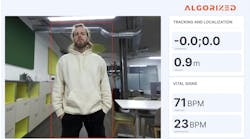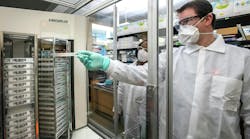In 2009, consumers of the pain reliever Tylenol reported a musty odor, requiring Johnson & Johnson to make numerous large recalls. The pallets used for shipment had been treated with a fungicide that had decayed into a chemical that was causing the odor, as well as gastrointestinal adverse effects. The recall cost Johnson & Johnson $900 million and the damage to the Tylenol brand will never be fully repaired.
There are four trends making it increasingly challenging for pharmaceutical organizations to prevent supply chain errors like that of the Tylenol scandal. However, organizations can implement digital technologies to improve supply chain operations and ensure consumers receive a high standard of healthcare.
Globalization
The pharmaceutical industry has been much slower to globalize than other industries, with high-income countries still dominating production and consumption. However, with many clinical trials now operating globally, including in developing countries, and many developing countries increasing their healthcare budgets, pharmaceutical supply chains are gradually globalizing.
Often, a drug’s active pharmaceutical ingredient (API) will be manufactured by one contract manufacturing organization (CMO), incorporated into the final dosage form by a second CMO and packaged by a third. It is becoming increasingly common for these CMOs to be in different countries.
Despite the increasing costs and complications caused by the globalization of pharmaceutical supply chains, customers are expecting faster deliveries than ever before. Therefore, efficient transport, effective tracking, and stringent quality control are becoming even more important.
According to a recent report by the Access to Medicine Foundation, one of the major causes of antibiotic shortages is a lack of visibility in the supply chain. Organizations can increase supply chain visibility using cloud technology to ensure real-time sharing of secure data. The cloud can be accessed by any authorized person, regardless of their location, so geographical boundaries are not a hindrance.
Personalized medicine
It takes an average of three years from submitting a drug to the Food and Drug Administration (FDA) or European Medicines Agency (EMA), to the drug reaching a patient. This is not fast enough for personalized medicine — patients with serious illnesses often cannot wait three years for a suitable drug. Therefore, the supply chain for personalized medicine must be rapid.
Investments in automation systems will be vital for speeding up the supply chain for personalized medicines while ensuring the level of precision required for patient safety is achieved consistently. At Hannover Messe in 2017, Siemens demonstrated how automation can be used to design a manufacturing environment that makes personalized medicine more commercially viable. To help automation technology find its way into the personalized medicine industry, Innovate UK has up to £6 million to invest in technology that will help businesses to understand and meet the challenges involved in developing personalized medicines.
However, a fully digitalized factory is a big shift for most manufacturers, requiring rapid change. To make the process more cost-effective, manufacturers can make existing equipment smarter by retrofitting, as well as implementing new equipment.
Biologics
The stability of biologics is complex because they are made from living organisms or contain components of living organisms. They often degrade by multiple pathways and these pathways may vary at different stages of shelf life. Also, many biologic drugs contain proteins, which can undergo slight structural changes in response to stresses such as temperature excursions. To make sure biologics are safe for consumption, the supply chain must be fast and physical conditions along the supply chain must be tightly and consistently controlled.
Generally, temperature control is greater at earlier stages of the supply chain. Every drug has a label claim, which provides stability information. As drugs begin their journey through the supply chain, the manufacturer ships full trailers of products with the same label claim. However, when the products reach wholesalers, pallets are broken up and products are comingled, meaning label claims become mixed. To make sure supply chains are temperature controlled in their entirety, the industry should pay close attention to improvements at the wholesaler stage.
There are also biochemical technologies that could improve the biologics supply chain. A collaboration between StoneStable, a start-up in Oregon, US, and Portland State University is investigating improved ways to transport vaccines, a type of biologic drug comprised of viruses. The team is experimenting with coating viruses in silica, which renders them inert and resistant to hot and cold temperatures and then returning them to their original state prior to consumption. This would allow vaccines to be transported at room temperature safely, which would reduce supply chain costs and the number of products discarded due to temperature excursions.
Counterfeits
The World Health Organization (WHO) recently estimated that one-third of all medicines sold worldwide are counterfeits. As well as damaging the reputation of pharmaceutical companies and causing them a loss of revenue, counterfeit medicines can cause considerable harm to consumers. This has been demonstrated in Sub-Saharan Africa, where counterfeit malaria pills have been responsible for an estimated 116,000 deaths a year.
The prevalence of counterfeit drugs is expected to increase as global costs for healthcare increase and technological advancements make it easier to make exact copies of drugs and their packaging. Fortunately, there are several technologies that can help protect pharmaceutical products against counterfeiting. A common approach is to package drugs with a barrier to entry. Examples include film wrappers, shrinkable seals and bands, breakable caps, tape seals and blister packs. The disadvantage of this approach is that the barriers are easy to mimic.
More advanced technology can provide greater protection against counterfeiting. For example, holograms can combine three layers of security features that show a product is legitimate. Embedded images, digital watermarks, and invisible printing are also effective because they require regulatory approval so they are challenging to replicate. Also, chemical and biological tags can offer highly secure authentication but are more expensive than other options and more challenging to implement.
The FDA recommends pharmaceutical manufacturers use multiple, periodically changing authentication measures on a product-specific basis, to provide the best possible protection against counterfeiting.
Since 2009, the capabilities of technology have increased dramatically. This has given companies like Johnson & Johnson the opportunity to improve their supply chains so that crises like that of the Tylenol brand do not happen again. For more information about how to digitalize your supply chain, visit https://www.euautomation.com.










